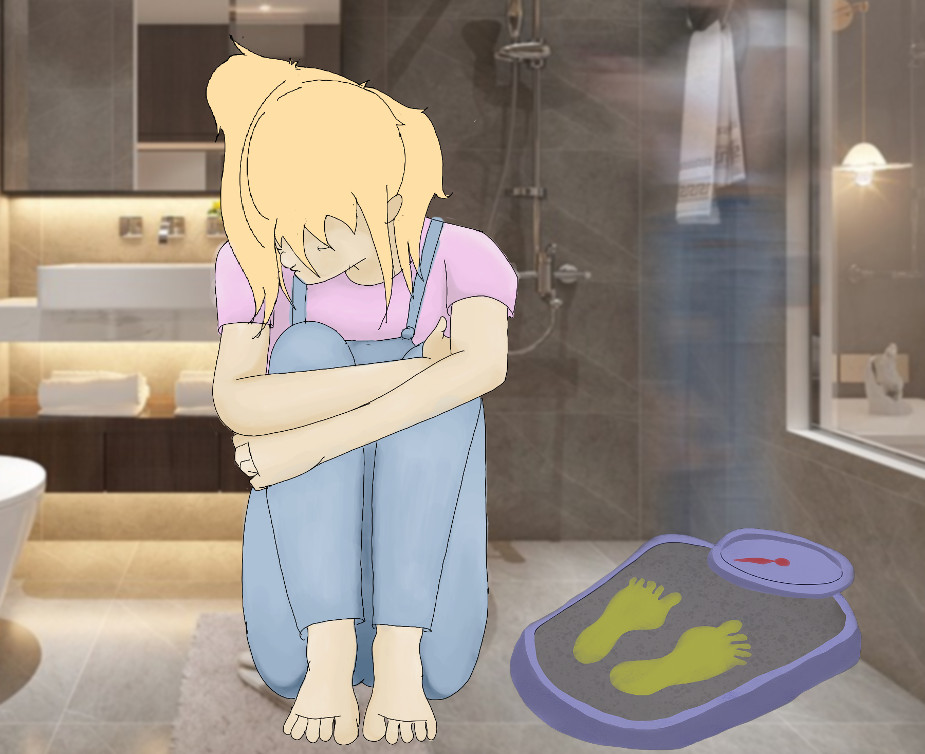
|
 |
 |
|
 |
One cannot think well, love well, sleep well, if one has not dined well, Virginia Woolf.
Our modern society is obsessed with wealth, youth, and sexuality. There is a multi-million dollar industry devoted only to making us look younger. Even worse, the new ideal woman is a pale and extremely thin person with large breasts. Models and celebrities are so thin that they look like they are suffering from anorexia.
Many people believe that happiness and success are linked to physical appearance. Therefore, it is no wonder that eating disorders have spread across the globe like a virus in an epidemic.
“Approximately 24 million people in the U.S. struggle with an eating disorder. Almost 50 percent of these people also meet the criteria for depression,” Do Something, 11 Facts About Eating Disorders. Anorexia Nervosa has the highest mortality rate of any psychiatric disorder, as high as 20%.

One of the main problems is the excessive importance of external beauty as being a key factor in attracting partners and overall success throughout life. Self-esteem is linked with beauty. This usually arises at puberty. It may be triggered by the stress and pressure of modern life, specially with pregnancy, illness, divorce, job loss, etc.
Besides the social factors previously discussed (where social media and advertising have a decisive and perverse influence), several factors have been identified related to eating disorders: genetic factors, personal traits (self-esteem, perfectionism) and family factors (rigidity, lack of conflict resolution, over-protectiveness).
There are several types of disorders, the most common are:
Bulimia. This is an excessive intake of food in response to a state of high anxiety, loneliness, boredom, anger or sadness. There is a sense of lack of control during this period. It is followed by feelings of remorse, disgust, and shame. Then, binge eating is compensated by self-induced vomiting, misuse of laxatives, diuretics, enemas or other medications, fasting or excessive exercise. Binging occurs, on average, at least 2 days a week for 6 months.
Anorexia is self-starvation to an unhealthy weight, it is a deliberate and controlled starvation mainly in order to reduce weight and look thin. It is characterised by a refusal to maintain a healthy body weight, an obsession or intense fear of gaining weight, and a distorted body image.
No matter what their weight is, people with anorexia or bulimia see themselves as overweight or fat. They may engage in self-induced vomiting, the use and abuse of diet aids or any other type of drug to lose weight, and excessive exercise to avoid weight gain.

Orthorexia refers to a fixation with eating healthy food (organic food, sugar free, with no fat, artificial ingredients, sweeteners, etc.) and avoiding unhealthy food. The obsession is not in the amount of food but its quality. It is characterised by: people spending two or three hours a day thinking about food, what and how much to eat, and how to deal with “slip-ups”; having very strict rules regarding the types of food they will allow themselves to eat, and what elements can and cannot be present in their diet.
They spend an insane amount of time planning, purchasing, and eating the right food. They may follow highly restrictive diets or plans such as raw veganism -it excludes all food and products of animal origin-, and they usually undergo detox or cleanse programs. They avoid going to restaurants or people’s houses (where junk food might be served) and become increasingly isolated and depressed.

Bigorexia is the obsession with one’s own musculature. There is a distorted body image, too. No matter how hard they try, their body is never muscular enough. They spend endless hours in the gym, have a rich carbohydrate and protein diet, and use substances like anabolic steroids and testosterone to get bigger and stronger.
